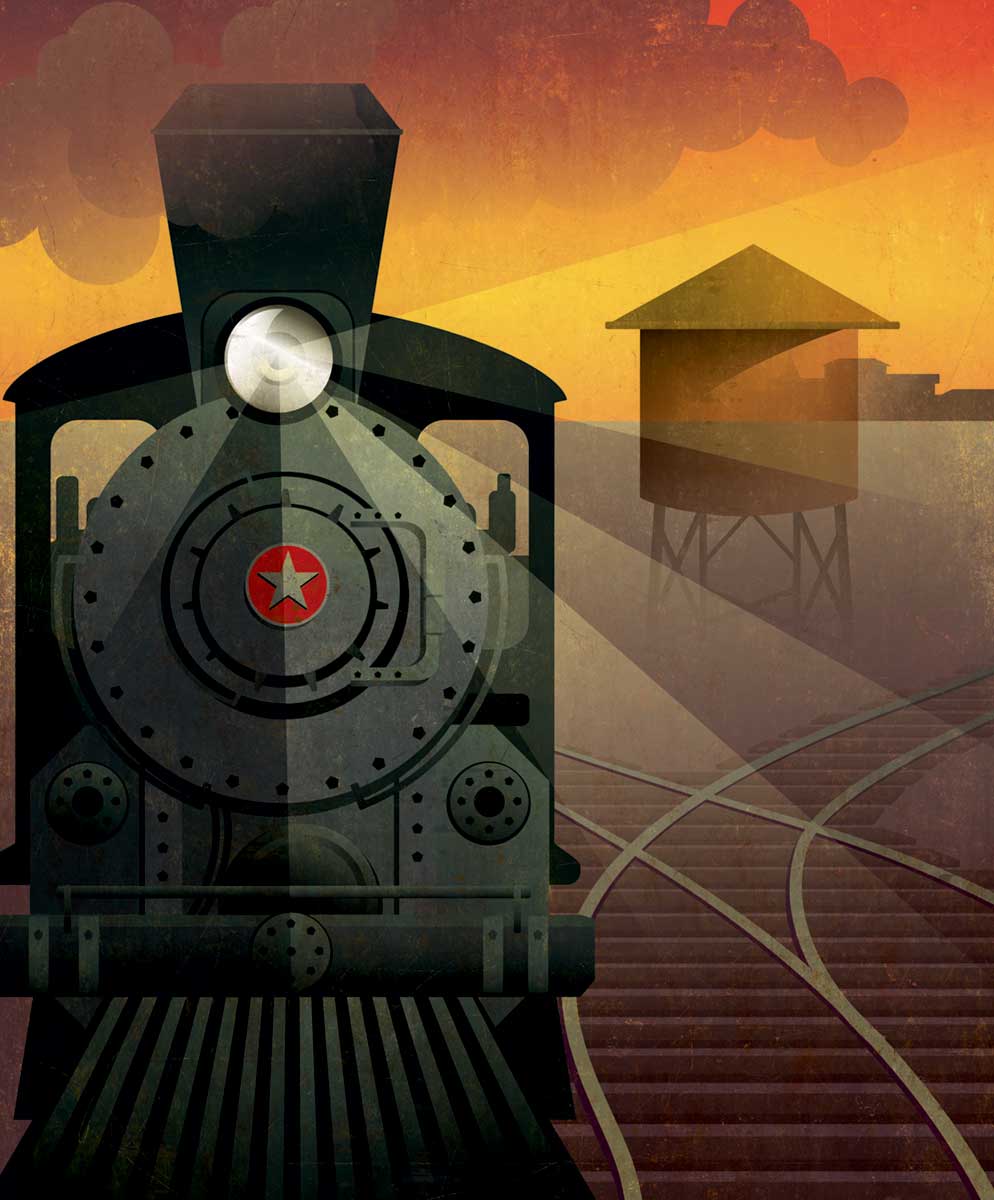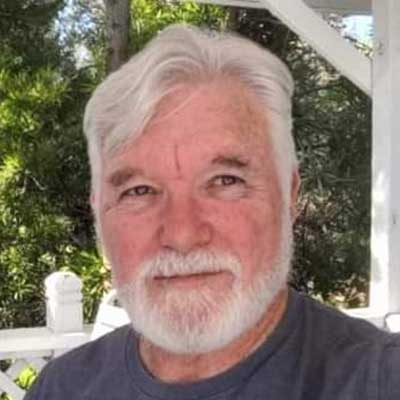The earliest Texas towns took hold alongside protected bays (Galveston and Corpus Christi) and riverbanks (San Antonio and El Paso). But by the late 1800s, railroads were planting the seeds that raised towns. More than any other technology, trains ushered Texas into the industrial age.
The railroads got a slow start in Texas, but an attractive funding program allocated the railroad companies more than 10,000 acres of land and a $6,000 loan for every mile of track.
Listen as W.F. Strong Narrates This Story
Visit Texas Standard for more W.F. Strong stories (most of which are true).
Towns developed along railroads for many reasons—one being that every 20 miles or so, steam locomotives required water. So water depots were built as needed, regardless of whether a favorable place for a town to prosper was nearby.
The far West Texas town of Valentine is such a case. The stop for the water depot was given that name because a railroad crew arrived there on Valentine’s Day 1882. Some say, however, that the town was named for John Valentine, a major stockholder in the railroad. Both could be true (a twofer, you might say). The town of 130 or so people still exists, and the post office does a booming business for, you guessed it, Valentine’s Day.
Some towns sprang up haphazardly because a construction camp lasted long enough for communal roots to grow. Langtry, along the Mexico border, was such a place. A tent town developed where the railroad builders lived while the project was underway, and the town was named for George Langtry, a railroad engineer for the Southern Pacific.
But Judge Roy Bean, famous as the Law West of the Pecos, rewrote that history to suit his own narrative. He sold worldwide the fiction that he had named the town for Lillie Langtry, the British American actress. He was so successful in selling this myth that she stopped to visit the town shortly after Bean died.
Abilene was created by the construction of the Texas and Pacific Railway line, with cattlemen and developers collaborating to establish a cattle market similar to Abilene, Kansas (for which Abilene was named). They needed room to build the cattle market, so the railroad bypassed Buffalo Gap, a more established community, prompting many in Buffalo Gap to relocate, since the railroad lines were the lifeblood of commerce in those days. Alongside those tracks on the first day of lot selling, the First Presbyterian Church was founded, and that prophesied the reputation of Abilene as having more churches per capita than any other town in Texas, not to mention three Christian colleges.
In 1860 the Houston and Texas Central Railway built a line through East Texas and created a depot that would become College Station. The school that would become Texas A&M University opened its doors in 1876. The next year the U.S. Postal Service designated the town College Station because that was the name of the railroad passenger depot. The railroad is still there, bifurcating the enormous 5,200-acre campus that it once bordered only on the west side.
The age of railroad dominance in Texas development is gone now, but the Lone Star State still boasts an important claim: Texas holds more miles of railroad than any state in the union—10,539—which still move the state’s commerce.



